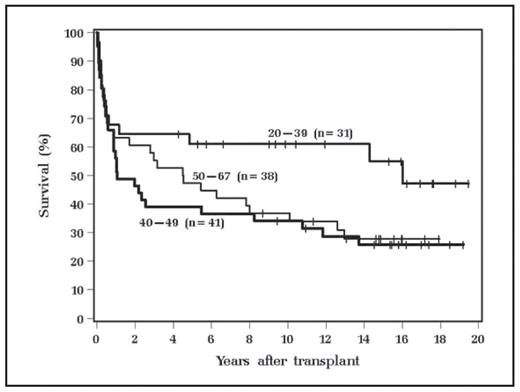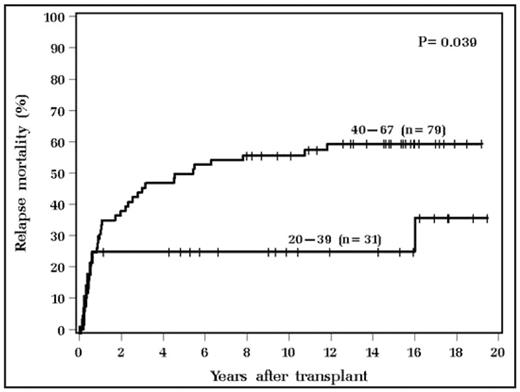Abstract
Despite the fact that autologous bone marrow/stem cell transplantation (ABMT) has been successfully used to treat patients with relapsed Non Hodgkin’s Lymphoma (NHL) for over 25 years, few series report follow-up beyond 10 years. We have followed a cohort of 110 NHL patients who underwent ABMT from 9/1988 through 12/1993, all treated with a uniform preparative regimen of CBV (Cyclophosphamide, BCNU, Etoposide (VP-16)). At the present time, 38 (35%) are alive and 72 patients have expired. Among the 38 living patients, the median follow-up is 15 years. NHL histology for all transplanted patients was based on the Working Formulation, and 21% had low grade, 54% intermediate grade, 25% high grade (the majority of the high grade group had diffuse immunoblastic large cell lymphoma). Median age at transplant was 47 years; 85% were sensitive to salvage chemotherapy; 31% had elevated LDH at the time of diagnosis; age adjusted IPI at ABMT was 0 (7%), 1 (56%), 2 (29%), 3 (7%). Multivariable analysis analyzing prognostic factors for survival predictably revealed that sensitivity to chemotherapy, and LDH status at the time of transplant, had significant impact on survival. Additionally, age at transplant was also highly significant (p=0.002). This is shown graphically below:
The incidence of low grade histologies was similar for all three groups. The younger group had a lower incidence of relapse mortality, as shown below:
It is commonly believed that age is of limited importance with respect to survival after ABMT. However, this data suggests that age may play a very important prognostic role. The causes are not well defined, but the continued relapse and mortality risk may warrant surveillance indefinitely for patients undergoing ABMT for NHL.
Disclosures: No relevant conflicts of interest to declare.
Author notes
Corresponding author



